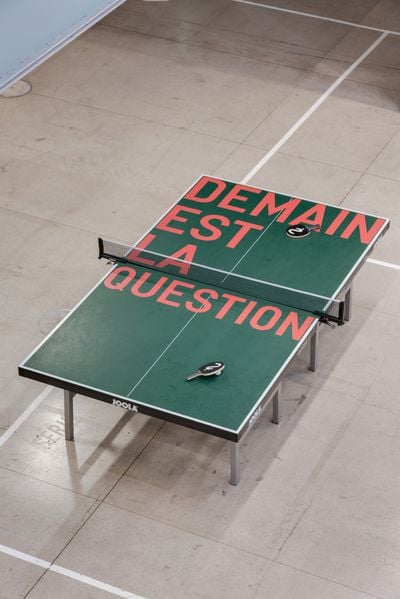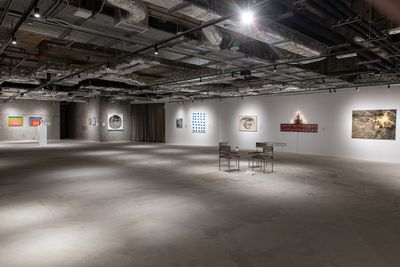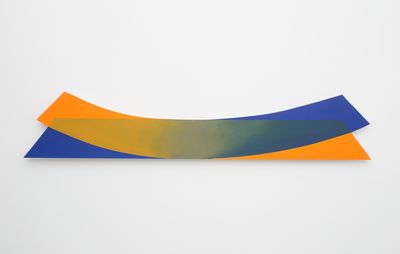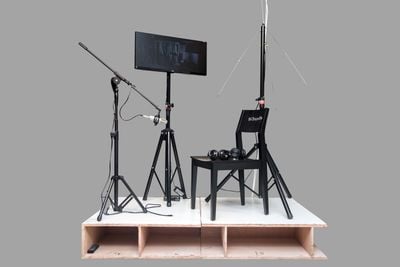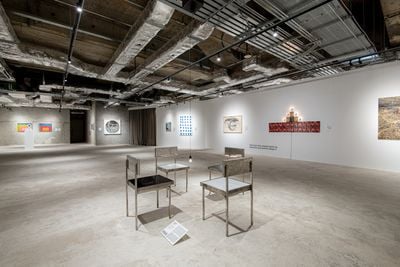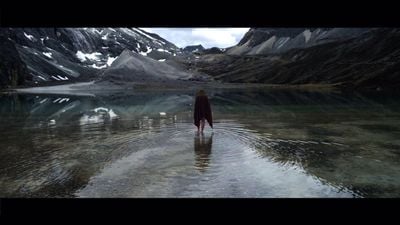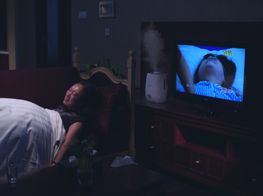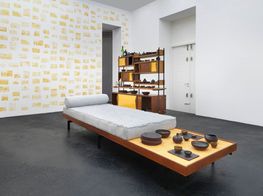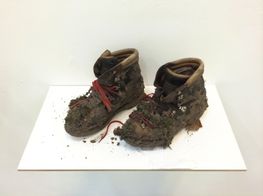From Central Eastern Europe to China: Q Contemporary in Hong Kong
Tracing the Fragments at K11 MUSEA marks the first expansive exhibition of Central Eastern European art in Hong Kong, connecting works by 20 artists from Central Eastern Europe and Asia, including Geta Brătescu, Ilona Keserü, and Chen Han.

Ilona Keserü, Birthday (Születésnap) (2005). Courtesy Q Contemporary. Photo: ©️ Dávid Biró.
Organised by K11 Art Foundation and Q Contemporary, which recently opened a Budapest space dedicated to 20th- and 21st-century Central and Eastern European art, Q Contemporary founder and Hong Kong native Queenie Rosita Law has pulled together a show that explores temporality as a way to connect across time and place.
While the show is assembled within a pop-up gallery at K11 MUSEA, the spherical exhibition chamber on the second floor known as Gold Ball hosts untitled 2015 (demain est la question) (2015) by Rirkrit Tiravanija as a standalone extension to the main showcase. A green ping pong table with the work's subtitle, which translates to 'tomorrow is the question', pasted in capital letters, is intended as an interactive art piece that symbolises the back-and-forth nature of social relationships.
First presented in 2015 at Un Nouveau Festival at the Centre Pompidou in Paris, which was dedicated to dialogues between art and games, Tiravanija's installation reactivates Ping-Pong Society (1970), an installation created by Slovakian artist Július Koller to reflect a space of democratic conduct at a time when society was subject to censorship and repression.
In Tiravanija's reimagination, the ping pong table expands on the original premise in Hong Kong by also drawing on themes of social gamification in an often-adversarial system of points, credits, and competition.
Tiravanija's work offers a link to the main exhibition and its curatorial motives, in which artworks become fragments that at once spark, mediate, and encapsulate personal experiences that when pieced together create a collective history: a narrative device championed by author James Joyce.
At K11 Art & Cultural Centre, the show opens with a quote from Dóra Maurer that sets the tone for the whole showcase: 'My work has been based on change, shifting, traces, temporality.' The first in a series of quotes that appear throughout the gallery, the words curve around a concrete pillar situated next to Maurer's acrylic on canvas Bicinies 5 (2015), depicting two curved sheets in bright blue and orange tones superimposed on each other.
According to Maurer, the painting explores the potential embedded in temporal relations and encounters: 'Time drives a wedge between two things touching each other, and pries them apart,' as quoted in the exhibition catalogue. 'The result is the awakening of the consciousness of new relations.'
At K11 Art & Cultural Centre, the show opens with a quote from Dóra Maurer that sets the tone for the whole showcase: 'My work has been based on change, shifting, traces, temporality.'
This awakening of new relations defines the intent of Tracing the Fragments in its gathering of works from two distinct regions. Take, for example, two installations that engage with Maurer's description of her work as a study of change through their interaction with readymade objects.
Tao Hui's 1 Character & 7 Materials (2015) challenges the way we understand and view linearity and time in videos, arranging seven one-minute videos in achronological order with audio fragments, while in Wang Gongxin's Unseatable (1995), kinetic energy propels a dimly lit light bulb suspended over four metallic chairs to interact with fluids contained in each, creating shadows and tracking time's changing nature.
Wang Gongxin views Unseatable as a transitional moment for his practice. First exhibited in an artist-run gallery in Red Hook, Brooklyn in 1994, the piece marks a move from painting to mixed media; a shift in material and technique that interacts with the wall text nearby: 'How does this artwork teach us about the past and the future?'
In the case of Unseatable, perhaps the lesson returns to Maurer's view of her own practice—that an artwork, like a life, is 'based on change, shifting, traces, temporality.'
Closing the exhibition is Cheng Ran's In Course of the Miraculous (2014–2015), in which a single screen is installed just above eye level in a corner shrouded by an open black curtain.
A near eight-hour-long film documents three real-life expeditions shot across the East China Sea, Tibet, Switzerland, and Amsterdam, from the crossing of the Atlantic and climbing the summit of Mount Everest to a commanding a trip through the China Sea.
Without clear narration, stories connected by human struggle are expressed in the gentle rumblings of beating drums and recorded audio capturing the audible textures of the surrounding world—the hums of ocean waves, roars of crewman, or silence.
In Course of the Miraculous is an emblematic work in the frame of Tracing the Fragments, in which an eclectic collection of works and artists from different social, political, and economic regions open up exchanges between personal and collective narratives, whether between artists and subjects, artists and artists, or viewers among viewers.—[O]






